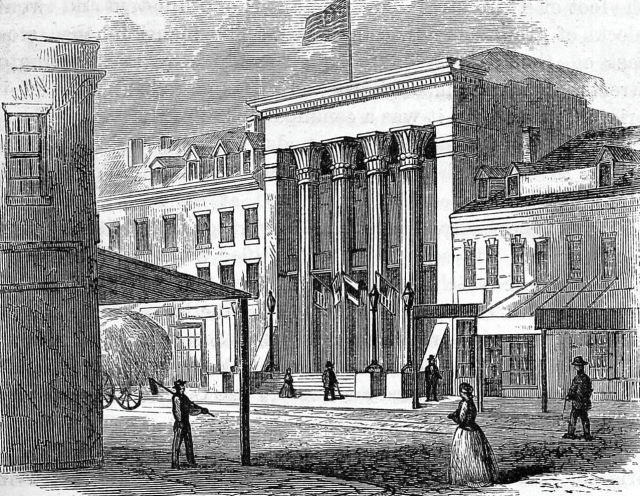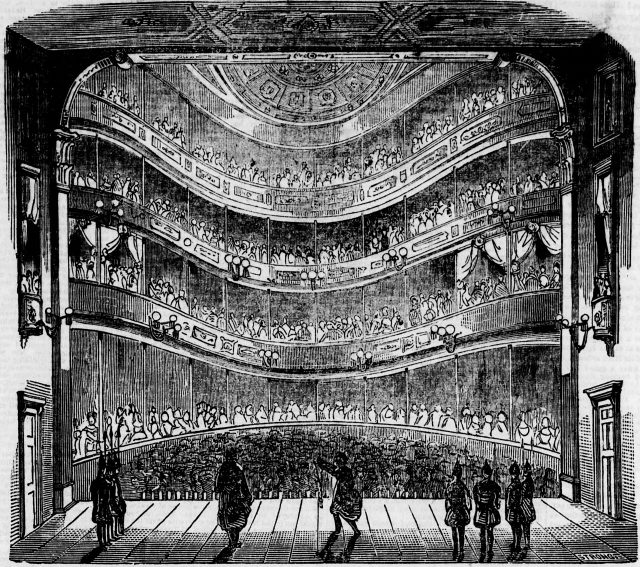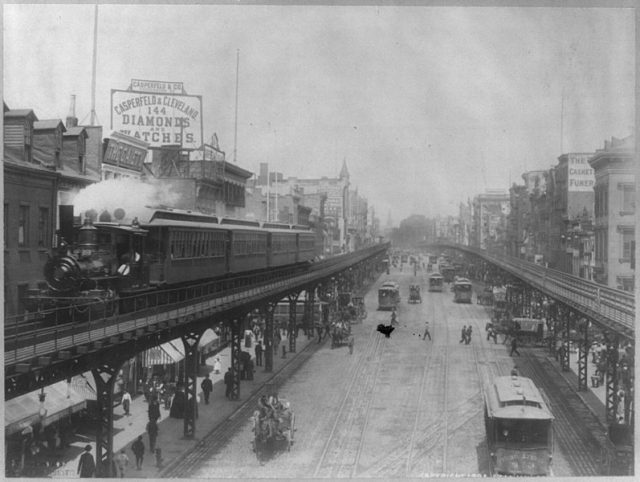From The Wall Street Journal:
A musical that opened on Broadway in late 1891 featured a song about a notorious stretch of Manhattan where, as the lyrics went, “I had one of the devil’s own nights. . . . The Bowery! The Bowery! / They say such things and they do strange things.”
The ditty took America by storm, according to “Devil’s Mile,” an intermittently engaging cultural history of the Bowery by Alice Sparberg Alexiou, the author of a previous book about the Flatiron building. Fans snapped up the sheet music and danced to the song in dives and drawing rooms.
It became too much for certain Bowery merchants, who insisted the tune was scaring customers away and futilely petitioned New York’s Board of Aldermen to change the street’s name. Cooper Avenue and Central Broadway were rejected. “Wot’s der matter wid der ‘Bowery’?” a local denizen demanded of a New York Times reporter. “I suppose you guys would like ter see it called der Foubourg St. Germain?”
The street wasn’t always a synonym for dissipation and degradation. The Bowery—both a street and a neighborhood in the southern part of Manhattan—began as a footpath marked out by the Lenape Indians. When, in the 1620s, the Dutch came ashore to found New Amsterdam, they widened the path for use as a highway and built farms nearby. The name “Bowery” derives from “bouwerij,” the old Dutch word for “farm.”
. . . .
Composer Stephen Foster has a cameo role in “Devil’s Mile,” as a sometime Bowery resident and as the composer of a song (“Swanee River”) that accompanied a production of “Uncle Tom’s Cabin” at a Bowery theater. So does Charles Dickens, whose “American Notes,” an account of his travels in the U.S., included a visit to the Bowery, where he was gobsmacked by the moves of William Henry Lane (known as “Master Juba”), a seminal figure in the creation of tap dancing.
As time went on, the Bowery became, by day, a place to buy inexpensive household goods; by night it was an adult playground. Beer gardens, dance halls, dime museums and shooting galleries proliferated, and love, whatever your inclination, was for sale. The street was lined with flophouses and soup kitchens, the last stop for the downtrodden and down-on-their-luck.
Link to the rest at The Wall Street Journal




Not just any footpath. It was a small portion of *the* path—the Wiechquaeseck Trail—that ran from the top of Mannahatta island to the bottom. And the Dutch didn’t widen Bouwerie Lane much, but the “dissipation and degradation” came early on. In 1638, the new director of New Netherland, Willem Kieft, wrote that the West India Company’s farms “lay vacant and fallen into decay; there was not a living animal on hand belonging to the Company on said Bouweries.” So the decay started early. And it wasn’t just the Dutch who were being disreputable. History book “Gotham” notes that “as for the inhabitants of New Amsterdam, they had a good claim to being the motliest assortment of souls in Christendom. Probably only a narrow majority of the heavily male European population was Dutch… The rest were Walloons, English, French, Irish, Swedish, Danish, and German, among others.”
The melting pot started early in New York.